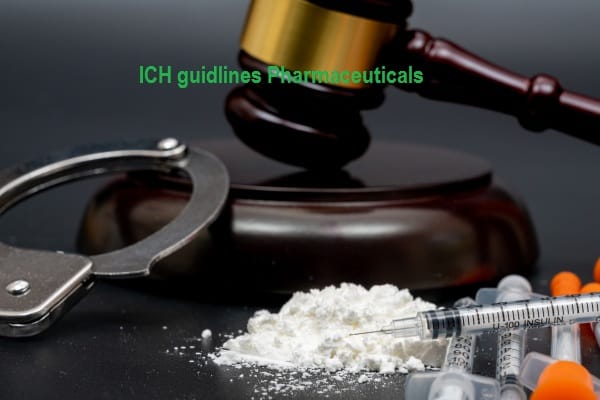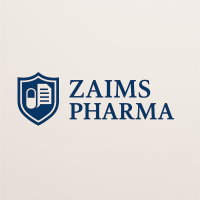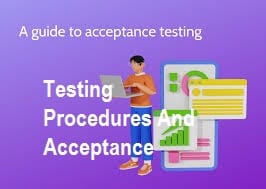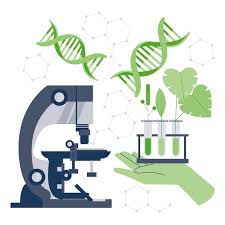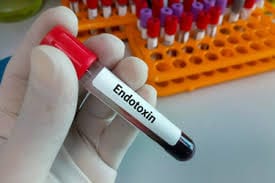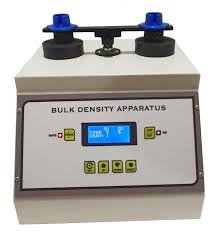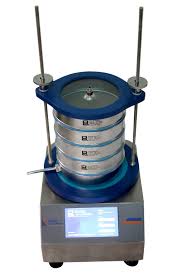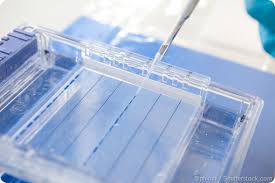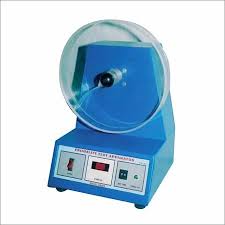|
Getting your Trinity Audio player ready... |
Introduction to ICH Quality Guidelines
ICH Quality Guidelines: The International Council for Harmonisation of Technical Requirements for Pharmaceuticals for Human Use (ICH) was established to streamline the development and approval process for pharmaceutical products. The ICH Quality Guidelines are part of this effort to ensure that drugs, biologics, and medical devices meet the required standards for quality, safety, and efficacy. These guidelines are designed to promote global harmonization and consistency in the pharmaceutical industry, especially across the major markets of Europe, the United States, and Japan.
The ICH Quality Guidelines primarily focus on the quality aspects of pharmaceutical products. They include detailed standards and recommendations for manufacturing practices, testing, and overall product quality. They also support regulatory authorities and industry professionals by providing a framework to assess the safety and efficacy of pharmaceutical products.
Here is a breakdown of the ICH Quality Guidelines, which cover a wide range of topics to ensure the safety and quality of pharmaceutical products.
1. Q1: Stability Testing:ICH Quality
Stability testing is crucial for evaluating the shelf-life and storage conditions of a pharmaceutical product. The ICH Q1 guideline addresses the stability testing of new drug substances and drug products. This guideline includes recommendations for conducting stability studies under different environmental conditions to determine the appropriate storage conditions, expiration dates, and the degradation rates of a drug. The guideline also covers testing procedures, documentation requirements, and analytical methods.
The stability studies should simulate real-life conditions under various temperature, humidity, and light conditions. ICH Q1 sets the standard for stability testing, ensuring that drugs maintain their intended quality throughout their shelf-life.
Key aspects of Q1 include:
- Long-term, accelerated, and intermediate testing conditions.
- Guidelines on testing durations (e.g., 12 months for long-term, 6 months for intermediate).
- Protocols for evaluating the drug’s appearance, potency, and degradation.
- Regulatory requirements for reporting stability data.
2. Q2: Validation of Analytical Procedures
Analytical methods are fundamental to ensuring the quality of pharmaceutical products. The Q2 guideline provides recommendations for the validation of analytical procedures used to test drug substances and drug products. Analytical validation ensures that the methods are precise, accurate, and reliable.
Key validation parameters include:
- Accuracy: The closeness of test results to the true value.
- Precision: The degree of repeatability or consistency of the analytical method.
- Specificity: The ability to detect and measure a specific compound in the presence of others.
- Limit of Detection and Quantification: The smallest amount of a substance that can be detected and quantified by the method.
- Robustness: The method’s capacity to remain unaffected by small variations in environmental factors or operational changes.
3. Q3: Impurities in Drug Substances and Drug Products
The Q3 guideline addresses the issue of impurities found in drug substances and drug products. Impurities are undesirable substances that can affect the safety, efficacy, and overall quality of a pharmaceutical product. These impurities may arise during the synthesis or manufacturing process, or they may be present due to degradation over time.
The guideline classifies impurities into three categories:
- Class 1 Impurities: Those that are potentially hazardous to human health and must be strictly controlled or eliminated.
- Class 2 Impurities: Those that should be limited due to potential safety concerns.
- Class 3 Impurities: Impurities with a low level of potential risk and are controlled through appropriate limits.
Q3 outlines the methods for identifying, quantifying, and controlling impurities to ensure the safety and purity of the final product.
4. Q4: Pharmacopoeial Harmonisation
The Q4 guideline is focused on harmonizing the pharmacopoeial standards for drug substances and drug products. Pharmacopoeias are official publications containing quality standards for medicines, and harmonizing these standards ensures that drugs produced in different regions meet the same quality expectations.
The Q4 guidelines aim to create globally accepted monographs for drug substances, excipients, and drug products. By harmonizing these standards, ICH helps to reduce regulatory barriers, improve manufacturing efficiency, and ensure product safety.
Key areas of focus include:
- The harmonization of excipient quality standards.
- Alignment of the test methods used in various pharmacopoeias.
- Standardization of manufacturing and control processes.
5. Q5: Biological and Biotechnological Products
The Q5 guideline addresses the quality requirements for biological and biotechnological products, such as vaccines, monoclonal antibodies, and gene therapies. These products are often more complex to develop and manufacture compared to traditional small-molecule drugs due to their biological nature.
The Q5 guideline focuses on ensuring the purity, safety, and efficacy of these products, particularly through the validation of manufacturing processes. The guideline also covers the challenges of characterizing biological products and maintaining consistency in production over time.
Key aspects of Q5 include:
- Process validation and controls for biological product manufacturing.
- Characterization of biologics using modern analytical methods.
- Methods for monitoring product stability and potency.
- Addressing the challenges of batch-to-batch consistency.
6. Q6: Specifications
Specifications are critical for ensuring that a pharmaceutical product meets its intended quality standards. The Q6 guideline provides recommendations on setting specifications for drug substances and drug products, including the test methods and criteria for acceptance.
Specifications are designed to ensure that a drug product will meet the necessary quality attributes at the time of release and throughout its shelf-life. This guideline provides a framework for establishing these specifications in a scientifically justified manner, considering factors such as stability, potency, and impurities.
Key aspects of Q6 include:
- Defining acceptance criteria for the identity, strength, quality, and purity of drug products.
- Recommended test methods and validation of testing procedures.
- Criteria for determining the quality of drug products during the manufacturing process and at release.
7. Q7: Good Manufacturing Practice (GMP) for Active Pharmaceutical Ingredients
The Q7 guideline provides detailed recommendations for Good Manufacturing Practice (GMP) for the production of Active Pharmaceutical Ingredients (APIs). The production of APIs requires strict adherence to manufacturing and quality control standards to ensure that the final drug product is safe and effective.
Key elements of Q7 include:
- The need for a robust quality management system to control every aspect of the production process.
- The importance of maintaining cleanliness and control over contamination during production.
- Guidelines for proper documentation and record-keeping to trace the history of production.
- Personnel qualifications and training requirements.
8. Q8: Pharmaceutical Development
The Q8 guideline focuses on the pharmaceutical development process, which involves designing drug products and their manufacturing processes to ensure that the final product meets quality attributes and regulatory requirements. This guideline encourages a science- and risk-based approach to product development.
Key aspects of Q8 include:
- Defining the critical quality attributes (CQAs) of drug products and drug substances.
- Development of a design space, which is a range of process parameters that ensure consistent quality.
- The use of process analytical technology (PAT) to monitor and control manufacturing processes.
9. Q9: Quality Risk Management
The Q9 guideline provides a framework for incorporating risk management principles into the pharmaceutical quality system. Quality risk management (QRM) helps identify and mitigate potential risks that could impact the quality, safety, and efficacy of pharmaceutical products.
Key components of Q9 include:
- Risk assessment techniques, such as Failure Mode and Effect Analysis (FMEA).
- Risk control strategies to ensure that critical quality attributes are maintained.
- The continuous monitoring of risk factors throughout the product lifecycle.
10. Q10: Pharmaceutical Quality System
The Q10 guideline outlines the establishment of a pharmaceutical quality system (PQS) to ensure consistent quality in drug manufacturing processes. A PQS involves creating a framework for the continuous improvement of product quality by incorporating good manufacturing practices (GMP), risk management, and process controls.
Key features of Q10 include:
- The need for an integrated approach to quality that covers all aspects of product lifecycle management.
- The role of the quality unit in overseeing the entire pharmaceutical process.
- The importance of ongoing product and process optimization.
Q11: Development and Manufacture of Drug Substances (Chemical Entities and Biotechnological/Biological Entities)
The Q11 guideline focuses on the development and manufacturing processes of drug substances, both chemical entities and biotechnological/biological entities. This guideline outlines how manufacturers should approach the development of drug substances and provides recommendations for ensuring the quality of the final drug product. It covers aspects from the initial stages of development through to large-scale production.
The key purpose of Q11 is to ensure that the manufacturing processes are well-understood and controlled to produce high-quality drug substances. It emphasizes the importance of process understanding and encourages manufacturers to design robust, scalable processes for both chemical and biological products. Furthermore, Q11 provides a framework for regulatory authorities to evaluate the quality of the manufacturing processes and the underlying science behind them.
Key Aspects of Q11 Include:
- Process Understanding: A detailed understanding of the chemical or biological process is essential. This includes understanding the critical parameters and their impact on the product’s quality.
- Process Design and Optimization: This part focuses on developing the manufacturing process to consistently yield high-quality drug substances, with special attention to critical quality attributes (CQAs).
- Regulatory Considerations: The guideline also addresses how drug substance processes should be documented for regulatory submissions, including the process validation and development of a Control Strategy.
Q11 encourages a flexible approach to the development of drug substances, especially for biological and biotechnological entities, where more variability is inherent due to their complex nature.
Q12: Technical and Regulatory Considerations for Pharmaceutical Product Lifecycle Management
The Q12 guideline provides an advanced framework for managing the lifecycle of pharmaceutical products, particularly in the context of post-approval changes. The goal is to provide a more flexible and consistent approach to managing changes throughout the product lifecycle while ensuring that the product’s quality remains intact.
One of the primary objectives of Q12 is to enhance regulatory predictability and efficiency by providing a structured approach for managing post-approval changes. It emphasizes the need for a lifecycle approach to pharmaceutical development and manufacturing, where continuous improvement and innovation are part of the product’s journey from development to commercialization.
Key Aspects of Q12 Include:
- Product and Process Understanding: The guideline highlights the need for an in-depth understanding of the product and process, allowing for more flexible regulatory pathways for post-approval changes.
- Regulatory Approaches to Post-Approval Changes: It offers guidance on how companies can manage changes in formulation, manufacturing processes, or packaging in a way that ensures continued product quality. The guideline proposes a risk-based approach, allowing regulatory agencies to approve certain changes without needing a full submission.
- Control Strategy: A key aspect of Q12 is the establishment of a Control Strategy, which is a comprehensive plan that ensures consistent product quality and guides regulatory submissions and changes. The Control Strategy defines the critical parameters that must be monitored and controlled to ensure that any post-approval changes do not affect product quality.
- Process Performance and Product Quality Monitoring: The guideline encourages continuous monitoring and data collection to ensure that product quality remains consistent over time, allowing for quicker approval of post-approval changes when needed.
Q12 also enables more collaboration between the pharmaceutical industry and regulatory bodies, fostering a more dynamic approach to product lifecycle management.
Q13: Continuous Manufacturing of Drug Substances and Drug Products
Q13 introduces guidelines for the Continuous Manufacturing of drug substances and drug products. Continuous manufacturing refers to the use of ongoing, uninterrupted manufacturing processes as opposed to batch production, which produces products in distinct quantities or batches. This type of manufacturing can improve the efficiency, consistency, and flexibility of pharmaceutical production.
Q13 supports the transition to continuous manufacturing, which has been gaining traction due to its potential to enhance product quality, reduce manufacturing costs, and allow for faster time-to-market. Continuous manufacturing processes enable real-time monitoring and control, making it easier to identify and correct deviations during production, which ensures higher product consistency.
Key Aspects of Q13 Include:
- Process Design and Control: The guideline stresses the importance of a robust process design to maintain control over the manufacturing process, ensuring consistent product quality. Manufacturers need to identify and control critical quality attributes (CQAs) and critical process parameters (CPPs) in continuous manufacturing.
- Real-time Monitoring: Q13 encourages the use of Process Analytical Technology (PAT) and real-time monitoring techniques to detect deviations and ensure the product’s quality during manufacturing. This technology allows for immediate adjustments to processes, improving overall product quality.
- Flexibility and Adaptability: The continuous manufacturing model should be flexible enough to accommodate different drug substances and drug products, allowing for easier scale-up and adaptability to changes in demand.
- Regulatory Considerations: Regulatory agencies are advised to adopt a flexible and efficient approach to the approval of continuous manufacturing systems. The guideline provides frameworks for regulatory authorities to review submissions related to continuous manufacturing processes and offer guidance on handling changes in the production process.
By supporting continuous manufacturing, Q13 aims to encourage innovation in drug manufacturing while maintaining strict product quality standards.
Q14: Analytical Procedure Development and Revision
The Q14 guideline focuses on the development, validation, and revision of analytical procedures used in pharmaceutical testing. The aim of this guideline is to encourage manufacturers to adopt a more systematic and scientifically sound approach to the development of analytical methods, particularly for those involved in product development and testing during the lifecycle of a drug.
Q14 emphasizes the importance of analytical procedures in ensuring the safety, efficacy, and quality of drug products. The guideline addresses the need for a more flexible, risk-based approach to analytical method development, where the robustness, sensitivity, and precision of methods are thoroughly understood and controlled throughout the product lifecycle.
Key Aspects of Q14 Include:
- Method Development: The guideline provides principles for the development of robust and reliable analytical methods. It stresses that methods should be based on scientific principles and should take into account the nature of the drug product, the intended use of the product, and the complexity of the manufacturing process.
- Risk-Based Approach: Q14 advocates for a risk-based approach to analytical method development and validation. This approach ensures that the method is fit for its intended purpose and considers potential sources of variability and uncertainty.
- Method Validation and Life Cycle Management: The guideline outlines the need for method validation at various stages of the product lifecycle. It encourages a life cycle approach to method development, meaning that analytical methods should be periodically reviewed, optimized, and updated as needed to reflect changes in product formulation or manufacturing processes.
- Revisions and Updates: As products evolve, so too should the analytical procedures used to evaluate them. Q14 provides guidance on revising and updating methods when new information arises or when changes are made to the product formulation, manufacturing process, or testing conditions.
Q14 is intended to ensure that analytical methods are robust, scientifically valid, and appropriate for their intended purpose, thus guaranteeing the quality of the pharmaceutical product throughout its lifecycle.
Q1: Stability Testing
- Q1A (R2): Stability Testing of New Drug Substances and Products
- Q1B: Stability Testing: Photostability Testing of New Drug Substances and Products
- Q1C: Stability Testing for New Dosage Forms
- Q1D: Bracketing and Matrixing Designs for Stability Testing of New Drug Substances and Products
- Q1E: Evaluation of Stability Data
- Q1F: Stability Data Package for Registration Applications in Climatic Zones III and IV
Q2: Validation of Analytical Procedures
- Q2A: Text on Validation of Analytical Procedures
- Q2B: Validation of Analytical Procedures: Methodology
Q3: Impurities in Drug Substances and Drug Products
- Q3A (R2): Impurities in New Drug Substances
- Q3B (R2): Impurities in New Drug Products
- Q3C (R8): Impurities: Guideline for Residual Solvents
- Q3D: Guideline for Elemental Impurities
- Q3E: Impurities in New Biological Products
Q4: Pharmacopoeial Harmonisation
- Q4B: Evaluation and Recommendation of Pharmacopoeial Texts for Use in the ICH Regions
Q5: Biological and Biotechnological Products
- Q5A (R1): Viral Safety Evaluation of Biotechnology Products Derived from Cell Lines of Human or Animal Origin
- Q5B: Quality of Biotechnological Products: Risk Management of Biologicals
- Q5C: Stability of Biotechnological Products
- Q5D: Derivation and Manufacture of Monoclonal Antibody Products
Q6: Specifications
- Q6A: Specifications: Test Procedures and Acceptance Criteria for New Drug Substances and New Drug Products: Chemical Substances
- Q6B: Specifications: Test Procedures and Acceptance Criteria for Biotechnological/Biological Products
Q7: Good Manufacturing Practice (GMP) for Active Pharmaceutical Ingredients
- Q7: Good Manufacturing Practice for Active Pharmaceutical Ingredients
Q8: Pharmaceutical Development
- Q8 (R2): Pharmaceutical Development
Q9: Quality Risk Management
- Q9: Quality Risk Management
Q10: Pharmaceutical Quality System
- Q10: Pharmaceutical Quality System
Q11: Development and Manufacture of Drug Substances (Chemical Entities and Biotechnological/Biological Entities)
- Q11: Development and Manufacture of Drug Substances
Q12: Technical and Regulatory Considerations for Pharmaceutical Product Lifecycle Management
- Q12: Lifecycle Management of Drug Products
Q13: Continuous Manufacturing of Drug Substances and Drug Products
- Q13: Continuous Manufacturing
Q14: Analytical Procedure Development and Revision
- Q14: Analytical Procedure Development and Lifecycle Management
Conclusion
The ICH Quality Guidelines play a vital role in ensuring the consistent quality, safety, and efficacy of pharmaceutical products globally. Each guideline addresses specific aspects of the pharmaceutical development process, from drug substance stability and analytical validation to good manufacturing practices and risk management. By following these comprehensive guidelines, manufacturers can produce high-quality products that meet regulatory standards and ultimately safeguard public health.
These guidelines also foster global harmonization, making it easier for pharmaceutical products to be approved and distributed worldwide. As the pharmaceutical industry continues to evolve, the ICH Quality Guidelines will remain a cornerstone for ensuring that new and existing drugs meet the highest quality standards.
